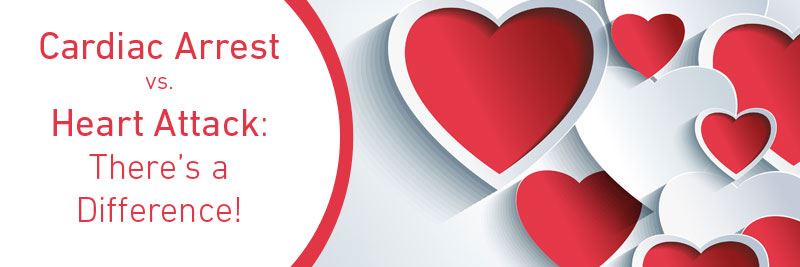Many people get confused between a Cardiac Arrest and a Heart Attack, or presume they are the same thing. This isn’t’ true, and knowing this information could one day save someones life, be it at home, out and about or in the office. Both heart attacks and sudden cardiac arrests can happen at anytime, to anyone.
What is Cardiac Arrest
A cardiac arrest can happen to absolutely anyone – fat, thin, small, tall, young or old. It is trigger when an electrical malfunction in the heart causes an irregular heartbeat (arrhythmia) which disrupts the natural pumping action and flow of blood form the heart and leaves the brain, lungs and other major organs without blood supply.
Did you know: For every minute that passes without defibrillation chances of survival decrease by 7-10%
Visible cues
Seconds after the arrhythmia, the victim becomes unresponsive, and stop breathing, or resort to gasping for air. If the victim does not receive treatment, death will occur in minutes.
Did you know: The survival rate for SCA is less than 5%. This is due to limited AED accessibility.
What should you do?
Cardiac Arrest can be treated and reversed in some victims if the rescuer acts quick enough, and has the right equipment in a close proximity. First, you should call the emergency services and start CPR immediately. If an Automated External Defibrillator (AED) is available, use it as soon as possible.
When looking for an AED, try nearby public buildings, shops and businesses. More and more companies and councils are realising the very real danger of SCA and the growing demand for Defibrillators. Most modern AEDs are fully automatic, meaning that anyone, without any medical training, can follow the instructions on screen and successfully administer a life saving shock on the victim. The AED will not shock, however, if the victim does not require it.
Read more about AED’s on our blog
What is a Heart Attack
A Heart Attack is different from a Sudden Cardiac Arrest in that it isn’t an electrical problem, it is a circulation problem and occurs when the flow of blood to the heart is blocked. This prevents oxygen-rich blood from reaching a section of the heart. It is important to act fast with a heart attack, as if the artery is not re-opened quickly, the part of the heart that is deprived of blood will begin to die.
Did you know: There are around 103,000 heart attacks in the UK each year
Visible cues
Symptoms of a heart attack are can be immediate and include intense discomfort in the chest or upper body areas, a shortness of breath, cold sweats and/or nausea/vomiting. More often the care, though, the symptoms start slowly and can go on for hours, days or even weeks before an actual heart attack occurs. Unlike a sudden cardiac arrest, the heart doesn’t usually stop beating in a heart attack, but the longer a person goes without professional treatment, the greater the damage it causes.
Did you know: Every seven minutes someone dies of a heart attack in the UK
What should you do?
Even if you’re not 100% that someone is having a heart attack, it is a good precautionary action to call the emergency services and stay with the patient until they arrive to take them to the hospital. Medical staff can advise on whether or not the patient is having or about to have a heart attack as well as treat them. If you take a patient directly to the hospital, always state that they are experiencing a heart problem, and they will often receive faster treatment.
Be prepared
Knowing the difference between the two, both in symptoms and treatment, could one day save the life of a colleague at work, family member in the home or a stranger out and about. We firmly believe that defibrillators should be commonplace in schools, sports centres, public buildings, offices and almost anywhere that a lot of people populate every day.

